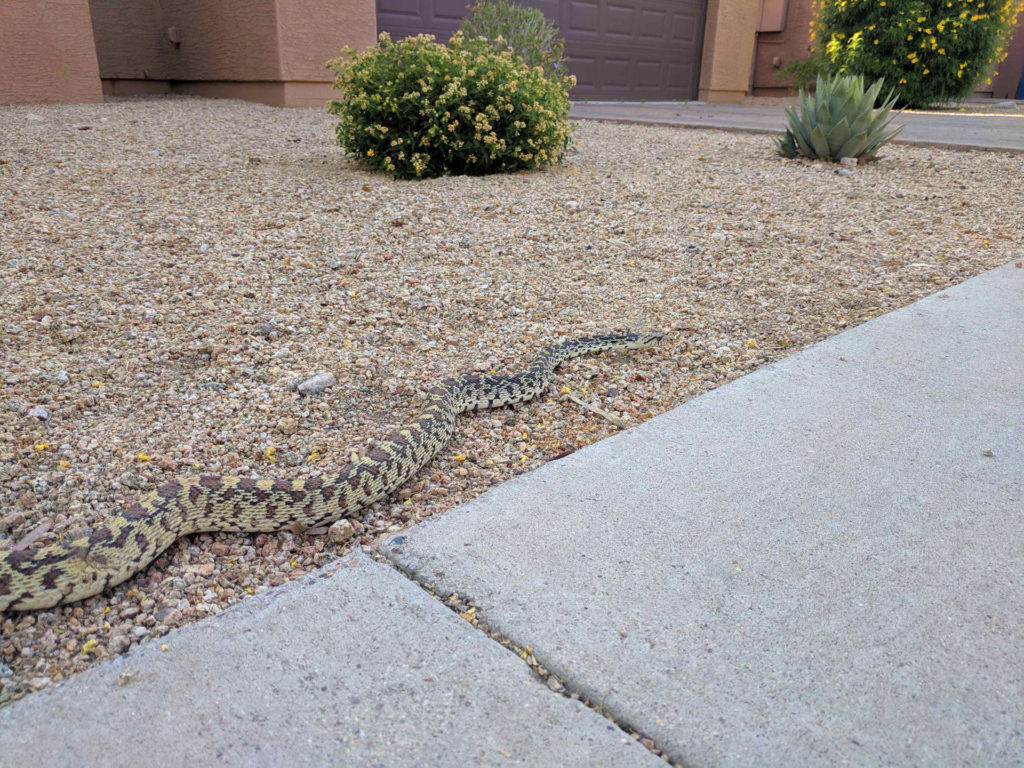
Along with many hundreds of rattlesnakes each year, harmless and beneficial reptile species are often captured and moved a short distance at the request of Arizona homeowners. Gophersnakes, Kingsnakes, Groundsnakes, Coachwhips – even lizards such as Chuckwallas – are gently stuffed into a bucket and escorted elsewhere.
This leads to an obvious and common question that we are asked when this is discussed. Why would anyone want to move a harmless species of snake from their yard? And, why would an ethical wildlife services business do so when asked? These are very good questions, and rather than mention it in our social media comments, I’ll address the topic here so it can be answered in detail.
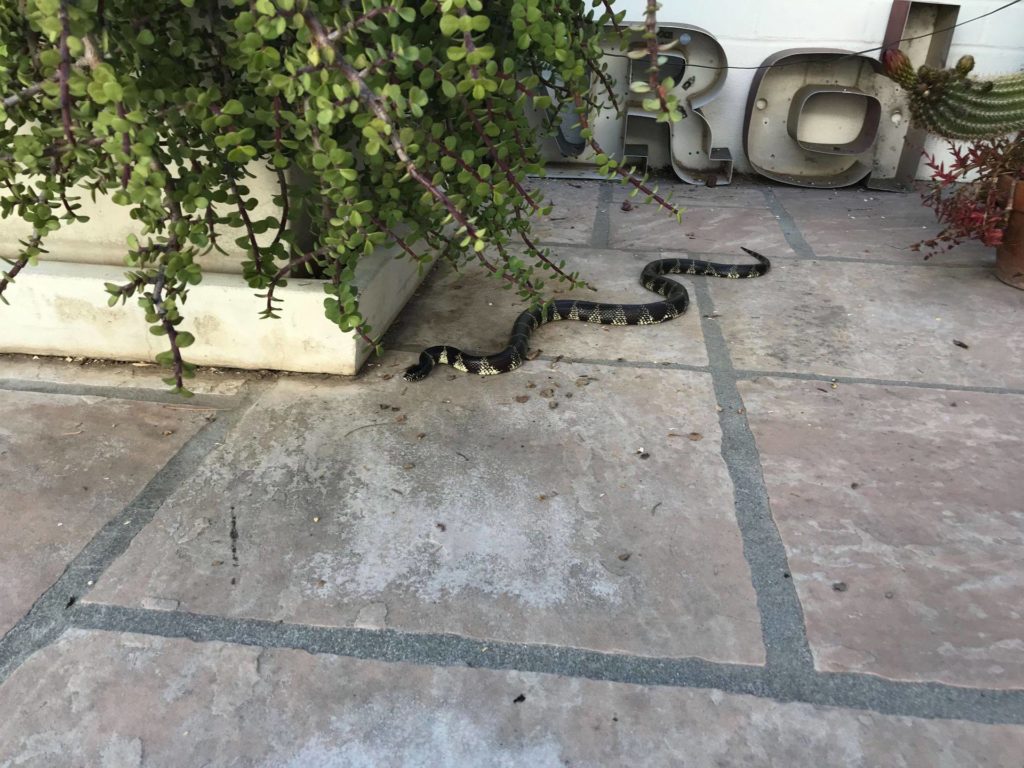
Before diving in, it’s important to understand the goals of snake-relocation and prevention as a practice. There are many ethical considerations that sometimes conflict with one another, and having clear criteria laid out can help form best-practice procedures. There are many masters to serve, and balance between them is not cut and dry. Some are of equal importance, where any action must take multiple priorities into consideration.
Primary considerations of equal weight for any action:
- Benefit to the snake. Is the action impact survivable and justified?
- Benefit to the homeowner. Are residents and pets made safer by action?
- Benefit to community. Is the public perception of wildlife positively affected by action?
Additional considerations that help shape decision-making, but are always secondary to the primary goals:
- Benefit to education/research. Is there information or a teachable opportunity gained by action?
- Benefit to ___insert relocation org here___. Does action help advance the operation and ability to positively affect primary goals?
Ultimately, capturing and relocating snakes must progress one goal above all else: peacefully mitigate immediate wildlife conflict while providing long-term, sustainable alternatives. Snake relocation is the quick fix, snake fencing, education, research, and ongoing outreach are the long game; the latter category should perpetually attempt to put the former out of business.
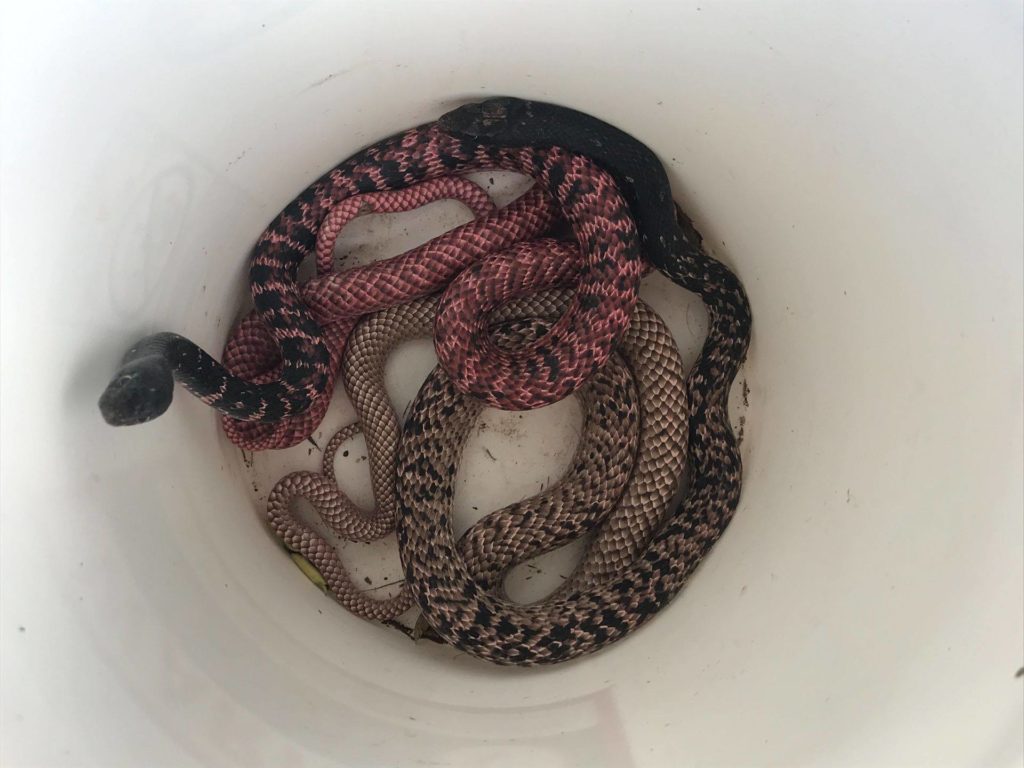
Why would a homeowner want to get rid of a beneficial snake, like a Kingsnake or Gophersnake?
Desert-savvy homeowners know that there is no better friend to have in the backyard than these large, harmless snakes. They are amazing, free pest control, in the very least. Some, like Kingsnakes and Coachwhips, even eat rattlesnakes (not Gophersnakes, contrary to popular belief, but that’s a subject for a different article). They don’t hurt anyone, including kids and dogs, as they quietly patrol the neighborhood looking to take out rodents wherever they find them.
The only downside? Simply, some people just do not like snakes. That dislike is most often synonymous with fear. Regardless of the type, aside from any knowledge, a deep cultural-phobia persists for many (I covered much of this in an earlier article about pre-summer mental preparation for the snake-phobic along with some resources if you’re firmly in the “hate snakes” crowd.)
Fear of snakes runs deep – at an individual basis and as part of our culture – and it is not easily fixed. From the outside (as occasional criticism from armchair conservationists seems to indicate) it may seem like all that’s needed to convince someone that the Gophersnake in the backyard is nothing to worry about are some quick facts. The reality is much more complicated.
We do our best to educate and provide as many alternatives as possible. We make sure that people know that the snake in their yard is harmless and will leave on its own. We also have the experience to know when that knowledge alone isn’t enough. In these instances, the situation is best handled by action. The snake can be safely escorted from the property and is not killed by terrified homeowners, who likewise benefit from the educational experience.
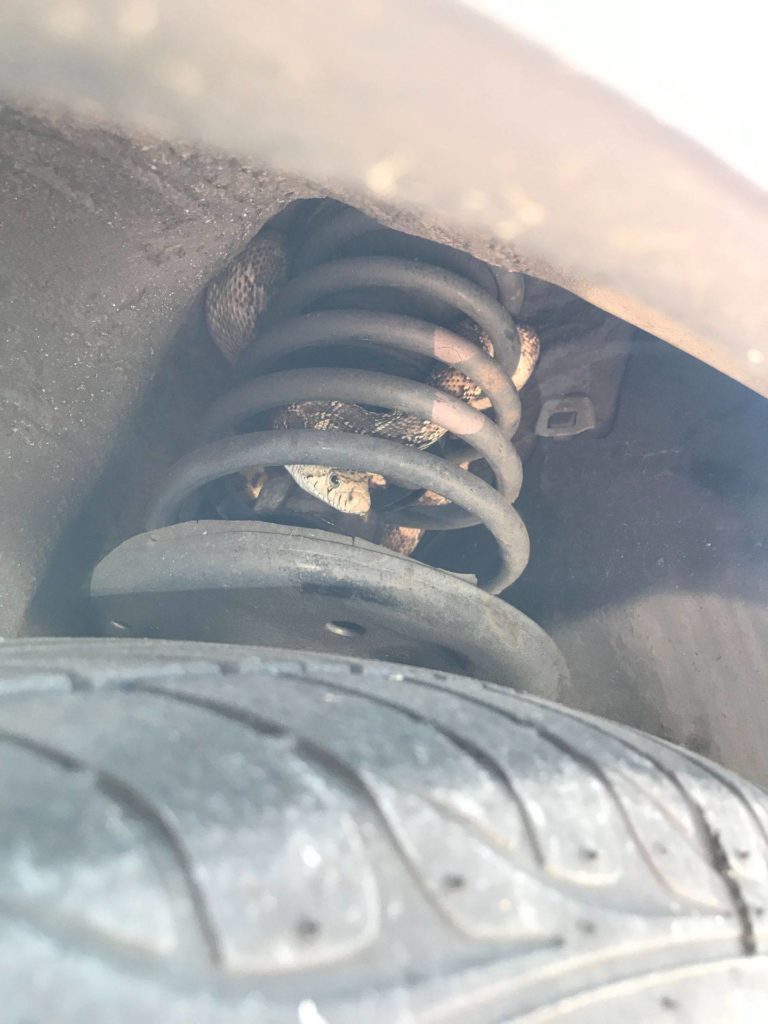
Why do you relocate harmless snakes instead of just educating the homeowners?
Based on the goals detailed in this article, sometimes offering knowledge alone will not create the desired outcome. It is important to understand the motivation of the caller, and be able to approach the situation regardless of the most ideal scenario.
In a perfect world, someone calling a snake removal group, who learns that the Gophersnake they’re looking at is harmless and will leave on its own, will thank the hotline operator and ignore the snake. This does happen quite often, but not always.
Fear of snakes is often not a purely logical process. While lack of knowledge and experience is a large component of fear, why and how it affects a person is not so simple that it can be eliminated by throwing interesting facts at it.
Apathy is another foe of education-only conflict mitigation tactics. Many people simply do not care or want to think about the snake in their yard – they just want it gone. It doesn’t mean they’re bad, ignorant, etc. … most people just don’t think all that much about snakes. That’s an odd expectation to have as a prerequisite prior to helping them. New information will not be valued by a person who doesn’t value non-essential knowledge, and that’s ok.
A person with a deep fear of snakes is not likely to be positively affected by learning that the Kingsnake on the patio is harmless and eats rattlesnakes. “I know, but I have kids.”
The guy that just moved into a home on a golf course and doesn’t know who David Attenborough is doesn’t care how cool the Nightsnake in his kitchen is. “It eats scorpions? Cool story bro. I’m killing it.”
We have learned the hard way what happens when idealism supercedes reasonable action. – dead snakes. We get emails and texts every day of decapitated and hacked-up snakes, many of which were well known to be entirely harmless.
Tasked with resolving the conflict between a snake and a person, it is not useful or reasonable to abandon both when the scenario is not convenient.
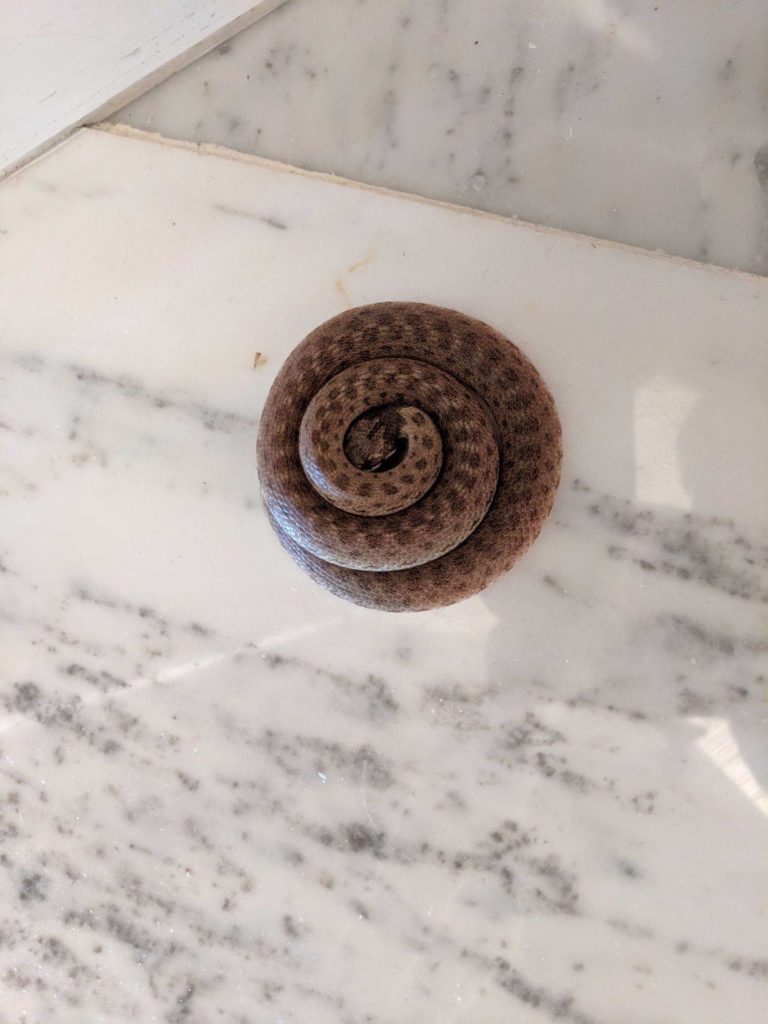
Conservation outreach is not a job best performed by robots.
For people who enjoy snakes, it can be difficult for us to empathize and act appropriately in these situations. Those who choose to work with the public need to not forget that “the public” is made of people. They should remember that, outside of nature centers and Facebook groups where people intentionally seek and value information, is everyone else.
Do you have anxiety when you fly? Here are reports and data that show how amazingly safe flying is, reading the entirety of which will not make a dent in how a nervous flyer feels on the runway. If this situation doesn’t apply to you, replace flying with whichever fear you have. Does anything change? Would it still change if you perhaps thought differently or had a different personality?
If you’re the type that creates or shares memes and information online to educate people about snakes (or anything, really), consider who you are talking to and why they should care before you do. If you routinely say “herp” or find yourself annoyed when someone mixes up venomous and poisonous, this article is for you. Don’t forget that educating people involves, primarily: people.
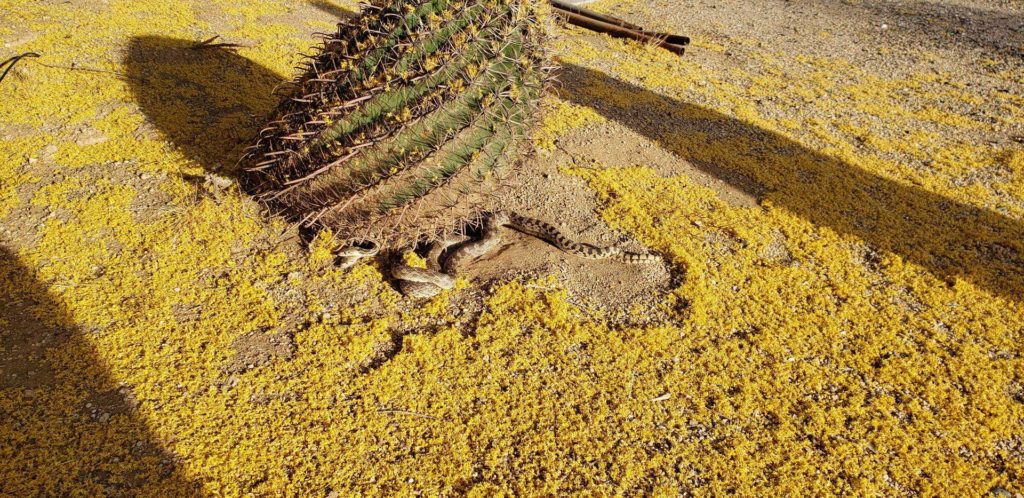
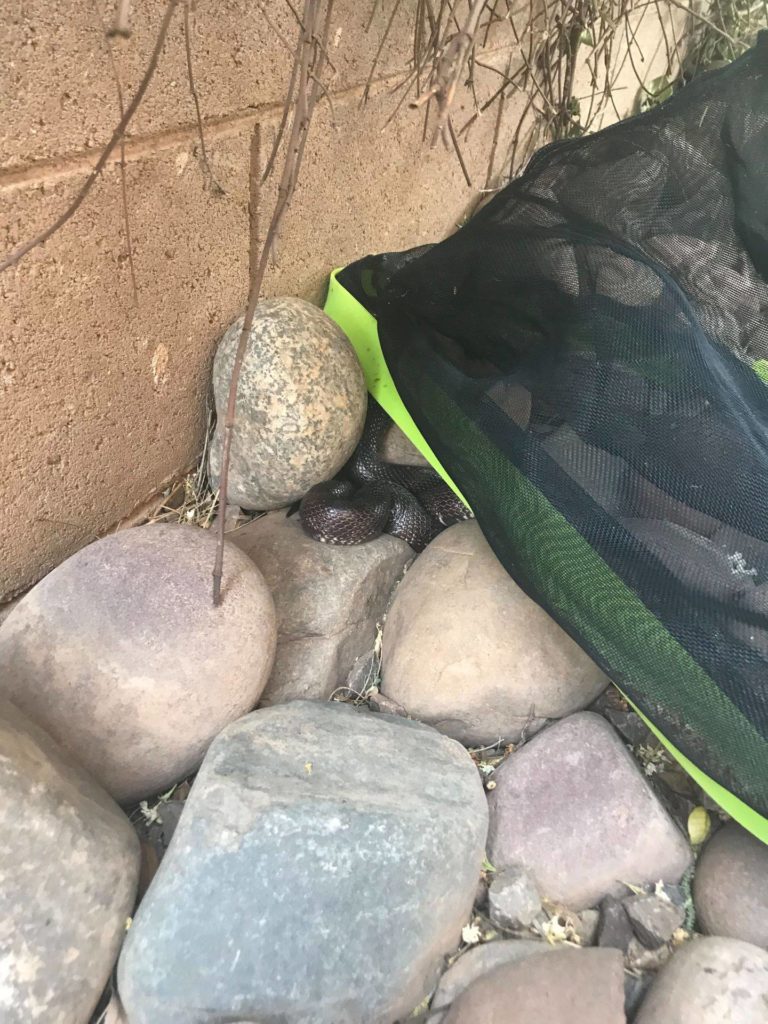
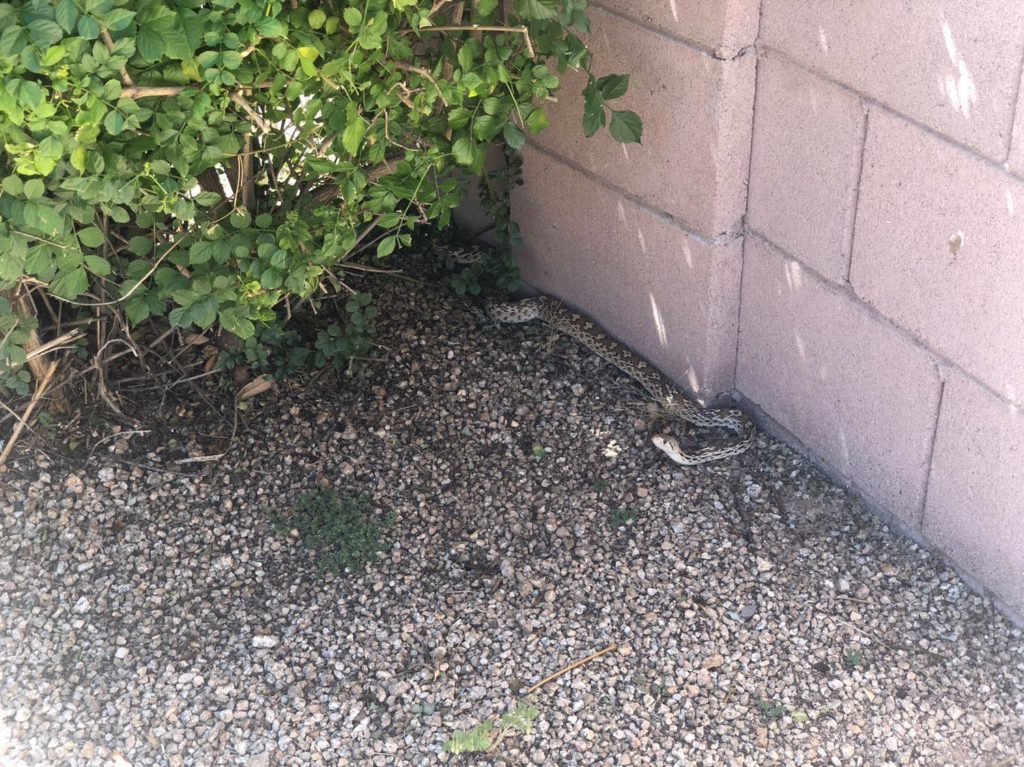
Sidenote: the elephant in the room.
Yes, we make money from it. We do try our best to provide as many free services as possible to teach people what these harmless snakes are and that they can just be ignored, but if the situation requires one of our team to spend time on-site, there’s a fee involved to cover our time. That can be seen as an issue for some, but it allows us as an organization to exist and be staffed by experienced professionals with more than a passing interest. That potential for ethical conflict is understood and great care is taken to make sure that whenever possible, these situations can be resolved by information alone. There’s always going to be the “all business is evil; all profit is corrupt” sect of young conservationists who dislike what we do, and that is ok.
